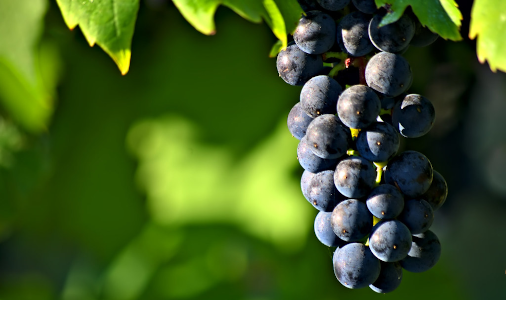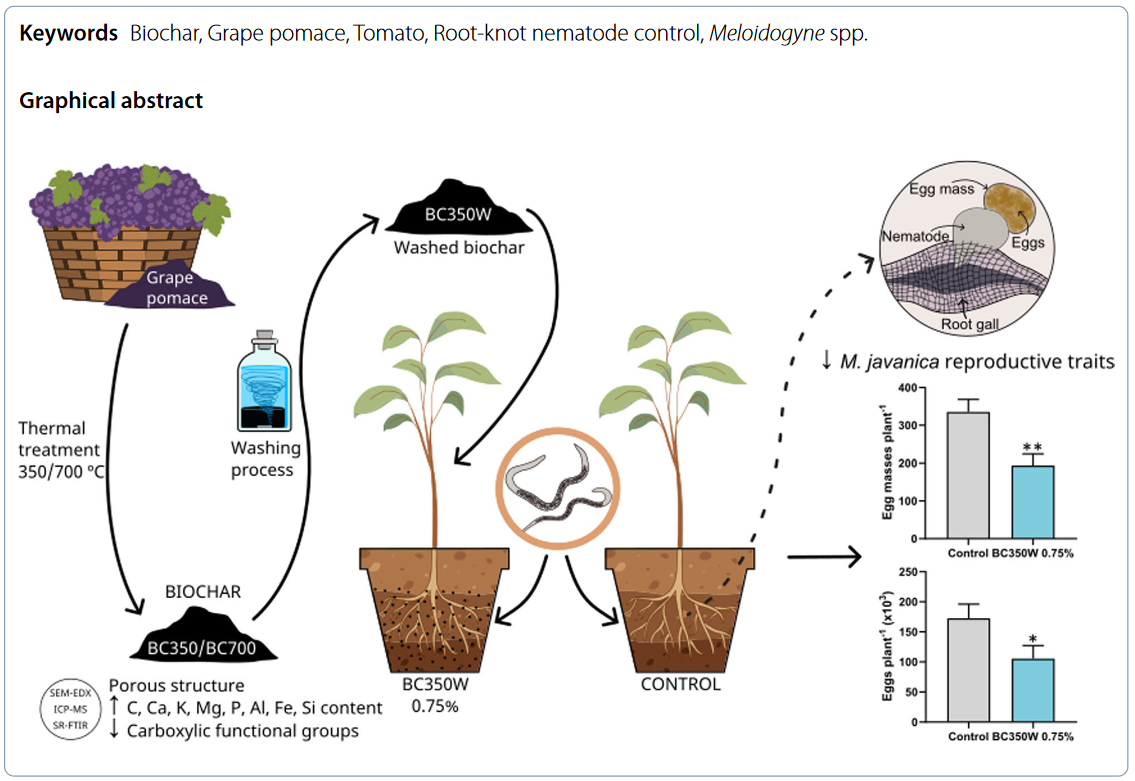
Nematodes are a big group of invertebrates also known as roundworms. They are among the most widespread pests and can be found in almost every crop worldwide, causing annual global agriculture losses of approximately $125 billion. In particular, root-knot nematodes parasite plants penetrating the roots and inducing knots or galls. The plant becomes their host and will nourish them until life cycle completion.
Root-knot nematode infection is difficult to eradicate and usually requires the use of toxic nematicides that are banned in most countries. In this sense, the research team, formed by scientists from the Universidad de Castilla la Mancha (UCLM), Universidad Autónoma de Madrid (UAM) and the Institute of Agricultural Sciences (ICA-CSIC), proposes the use of biochar as an environmentally friendly and economic alternative.
To run the studies, tomato plants were infected with Meloidogyne javanica, a root-knot nematode, and grown in hydroponic system over a clay sandy substrate mixed with different proportions of biochar. After several days of post-inoculation, nematode infection progression was analysed. The infective and reproductive traits of a Meloidogyne javanica population in tomato were significantly reduced (egg masses and eggs per plant) for the biochar pyrolyzed at 350ºC.
In parallel, researchers performed a complete characterization of biochar after a thermal treatment (pyrolysis at 350ºC and 700ºC) by determining their elemental composition and analysing the particulate structure. To do so they use, among other techniques, infrared spectroscopy at MIRAS beamline of ALBA. The analysis with synchrotron light enabled scientist to visualize the large changes in the biomolecular composition of biochar, occurring during grape pomace pyrolysis.
The thermal treatment of grape pomace turned it into a highly porous material rich in carbon and other water-soluble plant macro- and micronutrients. Data obtained at MIRAS also shows that biochar prepared at 350ºC maintained numerous biomolecules that may be important for its biological function in tomato plants.
Researchers highlight the importance of this study, thus "to our knowledge, this is the first time that an effect on plant-parasitic nematodes control using grape pomace derived biochar is described, although the mechanism of action, as well as their efficacy under field conditions, should be investigated in future research".
They also point out that recycling of grape pomace waste in southern European countries could constitute a relevant contribution to circular economy as grapes and wine production are economically significant in this area.
Reference: Ángela Martínez‑Gómez, Maria Fe Andrés, Ángel Barón‑Sola, Fernando E. Díaz‑Manzano, Ibraheem Yousef, Ismael F. Mena, Elena Díaz, Óscar Gómez‑Torres, Azucena González‑Coloma, Luis E. Hernández and Carolina Escobar. Biochar from grape pomace, a waste of vitivinicultural origin, is effective for root‑knot nematode control. Biochar (2023) 5:30. https://doi.org/10.1007/s42773-023-00228-8





